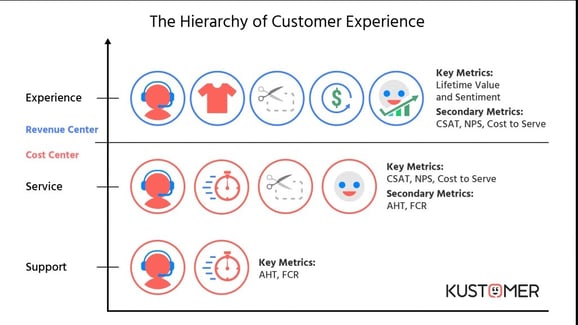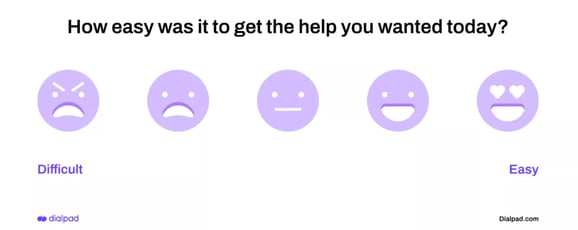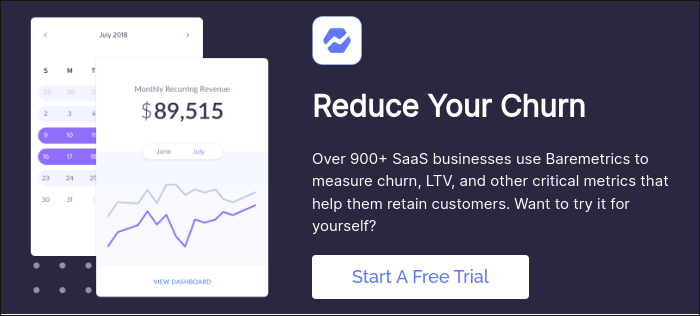Table of Contents

Managing the customer journey means understanding context and measuring the right metrics. Customer experience (CX) is a critical component of modern business management, but it’s far too easy to get lost in the sheer mass of available data.
Customer goals need to be aligned with business goals. It really is that simple. Unfortunately, CX measurement remains challenging. If you want to deliver the customer experience that will turn a one-off sale into a brand advocate then you must monitor and measure every stage of the customer journey to find out what you’re doing right and what you’re doing wrong.
Here are the CX metrics that you need to be monitoring and measuring if you want your customers to have the experience that your brand is fully capable of.

Image source
1. Net Promoter Score
There’s no avoiding the fact that the single most important CX metric to obtain is your net promoter score (NPS). Unlike the most common vanity metrics, an NPS score is a very real data set that measures how likely it is that an existing customer would recommend your business to someone they know.
NPS is based on a simple survey, asking your customers how they feel about their experience of buying from you. Then, you simply use your responses to gauge how effective and seamless your existing CX is. In a standard NPS survey, responses from 0-6 are referred to as “detractors”. These are the customers who wouldn’t recommend you to a friend. Scores of 7-8 are known as “passives”, and customers that give a 9-10 score are your “promoters”.
These promoters are your company ambassadors, so keep them happy. However, it’s those customers who have given a 0-8 score to your business that you need to look at more closely. They clearly have had a less than desirable experience buying from you, so you now have the opportunity to work on your CX and improve NPS.
This approach will take you one step closer to being a customer-centric organization, which should be the goal of all business leaders in today’s consumer-focused landscape.
2. Customer Journey Touchpoints
Data is more important than ever, and every company with a focus on business systemization needs to use its available data to improve the customer journey. By using your analytics, you can more easily identify when the customer journey has roadblocks that result in a no-sale.
The key here is to create a customer journey map so that you fully understand every step of the customer experience. Having a visual representation of the customer journey will make it far easier to understand how well you’re resolving pain points, understanding consumer motivations, and identifying precise customer motivations.
Ignore your vanity metrics, and look instead at the data provided by your website, events, reviews, surveys, and social media. Use the analytics of those touchpoints to learn more about the existing friction in the customer journey. By doing so, you’ll learn exactly how and where you need to fine-tune your CX to better support your existing and future customers.

Image Source
Often, small changes can transform the customer experience. Even something simple like adding a BPO call center to your customer communications can dramatically improve the CX. What is a BPO call center? It’s a simple step that improves communications, which are often where the CX often collapses. Take note of your analytics, learn from the data, and make changes where you discover stumbling blocks.
3. Customer Churn Rate
Customer churn rate simply describes the customers who have abandoned your company. It’s got a definable and actionable formula: customers that churned over a time period divided by customers at the start of that given time. That could mean they have unsubscribed from your email newsletters, haven’t renewed their subscriptions to your service, or just won’t buy from you again.
Of course, churn is an inevitability. The important thing to remember is that while you will always have customers who leave, knowing why they abandon you is vital. When you closely monitor your churn rate, you’ll have an immediate metric that can help you reduce the churn rate in the future. Always consider the seven Rs of customer retention – simply because it’s more cost-effective and profitable to retain an existing customer than attract a new one.
Once you know if your churn rate is growing or reducing, you’ll be able to more easily take actions that’ll reduce churn. It could be that your customers have had a poor experience on your communication channels, indicating that you need to implement a call waiting service to streamline this. Poor customer support is one of the main reasons for a high churn rate, so measure your lost customers as much as consistently as your brand advocates.
4. Customer Satisfaction
When it comes to measuring your CX, it doesn’t come any more straightforward than doing a quick after-sales survey to build a customer satisfaction score (CSAT). Every time that someone calls your virtual phone number or makes a purchase from your website, make sure that a quick survey question is delivered immediately.
This should be as easy to answer as possible. The question should be something along the lines of “how satisfied were you with your experience?” The responses should be easy to click on with a scale of 1-5 or 1-10. The average score of that survey will be your CSAT.

Image source
That immediate feedback is a quick and easy way to learn more about the CX. Unfortunately, many business owners fail to appreciate the value of a CSAT score because it can feel a little abstract. It doesn’t for example, measure brand loyalty or the reason behind an interaction. However, CSAT should be measured continuously, as it offers immediate insights into the customer experience.
Another way to get a glimpse into your CSAT is simply by looking at your online analytics. For example, a high page bounce rate is an indication that there’s something wrong with your customer journey. That could be a landing page that’s loading too slowly, your navigation isn’t clear, your introductions too rambling, or even something basic like a lack of brand consistency. Learn the difference between bounce rate and exit rate, and make changes where they’re needed.
5. Customer complaints
The questions that your customer service team gets asked are a goldmine of information. Too many brands overlook the importance of monitoring the questions that customers ask and so they miss common and frequent questions that will highlight roadblocks and friction in the customer experience.
The first step is to ensure that your audience can communicate with you in as many ways as possible. That means monitoring social media, initiating a remote call center management system, and having an always-on email response team.
If you’re getting the same questions or the same complaints consistently then that’s a metric indicating a problem. It’s much easier to resolve a problem if you know it exists. Monitor your communications, and learn from them.
6. Customer Effort Score
Customer effort score (CES) is often mistaken for a CSAT, although the two are slightly different. A CES measures how much effort your customers have had to exert to resolve their pain points. This could mean a purchase or getting a response to a query about your products.
The main thing to remember with CES is that the higher your score, the more likely that you’ll get repeat customers. Low scores lead to customers simply not wanting to do business with you again as you’re making things too difficult. This was highlighted way back in 2010 when HBR published a study highlighting that the key to building customer loyalty wasn’t to wow your customers, but to simply make their experience with you easier.
Ever since, CES has become an essential part of any business model. From earned to unearned revenue, a customer effort score is an essential insight into the experience of your customers. It’s less about customer satisfaction with their interactions, and more about the amount of effort they have to exert to resolve their problems.

Image source
Of course, like the CSAT, getting your CES means asking questions after interactions and engagement. For example, if you’re a realtor who is getting a high page bounce rate, that’s an indication that you’re not offering what your customers want. Ask questions, and you’ll find out quickly that those customers are looking for a virtual open house rather than static images on your website or in-person showings.
Always ask what you could be doing better and you’ll get the insights that are far more valuable than your social media vanity metrics.
Always Measure the Right CX Metrics
Businesses are overwhelmed with information. There’s so much data and so many platforms that provide vast amounts of detailed analytics that it can be hard to sift through the pointless metrics and focus on the wrong things. Knowing the right metrics is as valuable as gathering that information.
There are so many businesses focusing on the wrong metrics that mistakes are too easily made when it comes to customer experience. Using the right analytics and reliable reporting tools like Baremetrics streamlines the gathering and reporting of the right metrics. That level of automation is extremely valuable in today’s fast-moving business landscape. You can sign up for a free trial here and experience for yourself how to learn more about the experiences of your customers.


